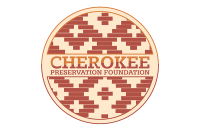Extreme commenting on plan for national forests
 Yogi Berra said it best — “It’s like déjà vu all over again.” When I read Holly Kays’ Nov. 12 article about the USDA Forest Service’s Plan Revision in The Smoky Mountain News (www.smokymountainnews.com/news/item/14637), I was taken back to the early 2000s, when I was a fulltime reporter at SMN covering meetings regarding President Clinton’s Roadless Initiative. People, groups and/or organizations had staked out positions either in opposition to or in support of the initiative and were pretty intractable.
Yogi Berra said it best — “It’s like déjà vu all over again.” When I read Holly Kays’ Nov. 12 article about the USDA Forest Service’s Plan Revision in The Smoky Mountain News (www.smokymountainnews.com/news/item/14637), I was taken back to the early 2000s, when I was a fulltime reporter at SMN covering meetings regarding President Clinton’s Roadless Initiative. People, groups and/or organizations had staked out positions either in opposition to or in support of the initiative and were pretty intractable.
But that was 15 years ago, right? Things are different now. The Forest Service and conservation and environmental groups have embraced consensus building and collaboration. The old ways of pointing fingers and calling names have given way to trust, right?
But who can you trust? Gordon Warburton is the mountain ecoregion supervisor for the North Carolina Wildlife Resources Commission. Warburton has worked closely with the Forest Service, helping to implement Master Stewardship Projects across the region (see www.smokymountainnews.com/travel-guide/item/5819). And Warburton told Appalachian Voices back in 2012 that, “There’s a brand new Forest Service out there. The agency had a problem in the 1980s with legacy logging, and they live with that. We (the Commission) used to ask that they hold back on some of their land disturbance activities. Today, they’re almost solely focused on ecological restoration. Glaring timber cuts have gone away.”
And in October, Jack Igelman of Carolina Public Press quoted Warburton: “It’s important to realize that it’s not the Forest Service of yesterday. We’re going to have to trust them in the process, too.”
Warburton was invited and accepted a position on the leadership team of The Nantahala-Pisgah Forest Partnership, described on their website as “… a variety of stakeholders, has come together to foster civic engagement and positive guidance in creating the best possible management plan revision for Nantahala-Pisgah National Forest.”
The partnership is made up of two dozen advocacy groups and their vision is, “The Partnership members represent a diverse cross-section of key stakeholder interests, including conservation groups, wildlife/hunting organizations, recreation groups, forest product businesses, cultural heritage groups, concerned residents, state and local governments, and others as identified. The Partnership has agreed to work collaboratively and in parallel to the Nantahala-Pisgah National Forest (NPNF) planning process to initiate a robust public dialogue in support of this process, utilizing a variety of sources including national, regional, tribal, and local/community expertise. Results will be compiled and presented as a set of recommendations to the NPNF, which can be considered for future management decisions. The Partnership’s approach emphasizes public participation and information sharing in order to reach community-supported and science-based methods for forest management, interpretation and investment. Further, the Partnership strives to create a lasting voice for innovative management and public investment in the public forests of North Carolina’s mountains for the future.”
Related Items
Looks like a great fit, right? A knowledgeable partner representing a state agency — the state Wildlife Resources Commission — with close ties to the Forest Service and a constituency (hunters and fishermen) with a visceral connection to our public lands. Who could be in a better place to join in a “robust public dialogue in support of this process” — the Plan Revision — a process that Warburton has already encouraged us to trust? But in October, Warburton went to a meeting of a group called the Fish & Wildlife Conservation Council and presented a 43-page PowerPoint encouraging specific actions with regards to the plan revision. Here are some direct quotes from that PowerPoint:
“We have to stand opposed to all new wilderness additions — period — OVER 70 percent going to old growth.”
“Mountain Treasures [a collection of 41 areas across the Nantahala and Pisgah NFs that the Wilderness Society feels need greater protection] — oppose recognition of these by USFS.”
“Mountain Treasures — need to identify sportsmen who have an interest in each one of the mountain treasures — must address management and wildlife importance on every area, e.g. OLD MANAGEMENT AREAS.”
“We need to be able to address each of the key Mountain Treasures areas — need sportsmen who can speak against these and rally locals against them.”
“NCWRC will develop a case for management in each area.”
“Old Growth needs to be re-examined — call for a re-examination of designated areas — with so much of the forest that cannot be managed, how much designated old growth do we need? ”
And, you can imagine, within 43 pages there are many more specific actions called for. There is a section regarding the Mountain Treasures section, labeled “Their Strategy.” I’m not sure if “they” are The Wilderness Society or simply anyone who believes there are areas in the Nantahala and/or Pisgah that would benefit from more protection.
I find this blatant rally against any kind of collaboration regarding old growth and/or any other forest areas that some deem worthy of protecting sad. When I research media and/or websites etc., I find a lot of merit in some of Warburton’s argument for more early successional habitat. And I know lots of people from various conservation/environmental groups who would agree on some of those measures, perhaps many — but when I see this kind of my way or the highway bombast, I have to wonder how sincere those other scenarios are.
Fifteen years or so ago “they” were called environmental wackos. Today, from perusing different websites, chat boards, message boards, etc., it looks like the epithet du jour is “extremist,” therefore the title of this piece, because while some out there won’t want to listen to opposing views or engage in collaboration, the Forest Service is mandated to do just that. So it’s “extremely” important that if you have reservations regarding the FS’s draft plan that you comment and let them know. It could be that you find the areas where timber harvest and/or timber production could, perhaps, be allowed too large or ill defined. Or perhaps the language is too vague and you would like more detail about what would be timbered when, or it could be any other part of the draft plan, just let them know that you don’t support this draft in its present form — comment because you know “they” will.
To comment, email This email address is being protected from spambots. You need JavaScript enabled to view it. or mail comments to 160 Zillicoa St., Suite A, Asheville, N.C., 28805. Comments received by mid-December will carry more weight.
And I will be back later with more thoughts regarding the Plan Revision.
(Don Hendershot is a writer and naturalist. He can be reached a This email address is being protected from spambots. You need JavaScript enabled to view it..)









